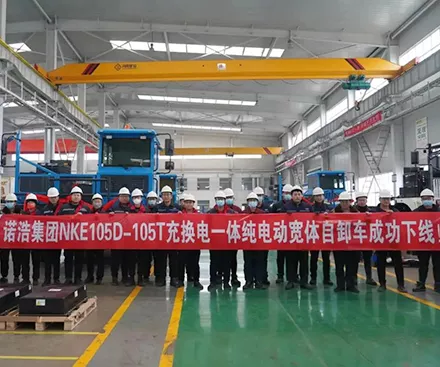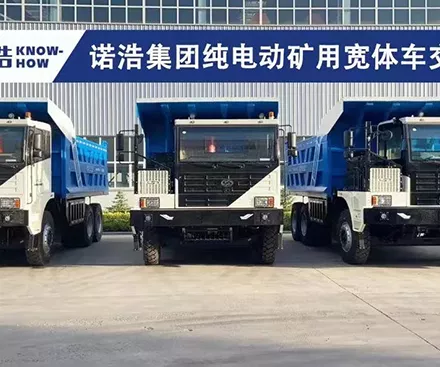A tri-axle vehicle is a truck, tractor, or trailer with three axles grouped together at the rear. Tri-axle vehicles are primarily used to haul heavy loads. The multiple axles and wheels allow for better weight displacement and stability. Dump trucks, tow trucks, and cement mixers usually have a tri-axle design. The additional axle enhances weight-bearing capacity and provides extra support, allowing tri-axle trucks to handle heavier loads compared to standard two-axle trucks.
The capacity of a triple axle dump truck varies depending on the make and model of the vehicle. Generally speaking, most tri axle dump trucks are capable of carrying between 25 and 30 tons of material. However, the capacity of a dump truck can be affected by factors such as the weight distribution of the load and the condition of the roads to be traveled.
Tri-axle configurations are utilized in various truck types, including dump trucks, tri-axle tractor-trailers, and concrete mixers.
- Tri-Axle Dump Trucks: These are frequently used in construction to transport materials like gravel, sand, or dirt. Larger and more powerful than standard dump trucks, tri-axle dump trucks can carry heavier loads over extended distances. Their hydraulic dump beds ensure efficient unloading of materials at job sites.
Tri-axle trucks typically feature two drive axles and one non-driving axle in the rear. This configuration helps evenly distribute weight, reduces stress on individual axles, and ensures compliance with weight regulations.
Designed for heavier loads, tri-axle trucks outperform two-axle trucks in weight-bearing capacity, making them ideal for bulk goods, construction materials, and other heavy cargo.
The extra axle improves stability and control, especially when fully loaded, enhancing safety on highways and uneven terrain.
Tri-axle trucks are commonly used to meet weight regulations, minimizing road and bridge wear caused by overweight vehicles.
While tri-axle trucks come with higher upfront costs and potential fuel efficiency drawbacks due to their added weight, advancements in technology aim to offset these limitations.
The suspension system on tri-axle trailers is critical for stability, load management, and ride comfort. Below are common types of suspensions:
- Leaf Spring Suspension: Comprising flexible metal strips (leaf springs), this traditional system absorbs shocks and evenly distributes weight.
- Air Suspension: Using airbags for support and dampening, this system offers adjustability and a smoother ride.
- Torsion Axle Suspension: Employs rubberized torsion bars for durability and ease of maintenance.
- Independent Suspension: Each wheel has its own suspension, allowing superior handling on uneven terrain, though it is more expensive and complex.
- Walking Beam Suspension: Features a pivoting beam for independent axle movement, enhancing traction and stability on rough roads.
- Slipper Spring Suspension: Utilizes a single leaf spring for a simplified system, suited for light to medium-duty trailers.
- Rubber Torsion Axle Suspension: Relies on rubber cords within the axle tube for smooth operation and minimal maintenance.
The primary difference among two-axle, tri-axle, and quad-axle vehicles lies in the number of axles and wheels, which impacts weight distribution, load capacity, and maneuverability. While all configurations are widely used in trucking, tri-axle and quad-axle vehicles are preferred for heavier loads. However, increasing the number of axles can reduce maneuverability in tight spaces.
Quad-axle vehicles generally offer the highest payload capacity, as the extra axle distributes weight more effectively, reducing strain on individual axles. Two-axle trucks are designed for lighter loads, with only two points of weight distribution.
Quad-axle vehicles provide slightly better stability due to their additional axle and enhanced weight distribution, making them suitable for heavier or uneven loads.
Both tri-axle and quad-axle vehicles must adhere to strict weight regulations. The number and spacing of axles are crucial to compliance. Additional endorsements, such as a “T” endorsement for doubles or triples, may be required alongside a CDL for certain configurations.
The choice between these configurations depends on cargo weight, road regulations, and specific use cases. Operators must ensure compliance with local laws for safe and legal operation.
A tag axle, or "booster axle," is a non-powered axle that provides additional load support and improves weight distribution. Unlike drive axles, it does not contribute to propulsion but serves critical functions in heavy-load transport.
- Weight Distribution
The tag axle helps evenly distribute the truck's load, reducing strain on other axles and complying with weight regulations.
- Increased Payload Capacity
Adding a tag axle enhances the truck's weight-bearing capacity, allowing for heavier or oversized loads while maintaining regulatory compliance.
- Improved Stability
The extra axle boosts stability, especially when the truck is fully loaded, ensuring safer operation during maneuvers and on uneven terrain.
- Adjustable or Lift Axles
Some tag axles can be raised when not needed to reduce tire wear and improve fuel efficiency. They can be lowered to provide support when carrying heavy loads.
- Steerable Tag Axles
Steerable tag axles improve maneuverability, particularly in tight spaces or urban areas, making them ideal for specific operational needs.
Safety is critical for tri-axle trucking companies to protect drivers, the public, and cargo. Below are key safety considerations:
Provide comprehensive training on operating tri-axle trucks, including loading, unloading, weight distribution, and safety regulations. Ensure drivers have the correct CDL class (A or B) for the equipment.
Adhere to local, state, and federal regulations, including weight limits, axle spacing, and cargo-specific requirements.
Follow a preventative maintenance schedule to keep trucks in optimal condition. Inspections should cover brakes, tires, lights, and other essential components.
Ensure proper cargo weight distribution to maintain vehicle stability and handling. Avoid overloading specific axles.
Plan routes considering road, bridge, and tunnel conditions, as well as weight restrictions and regulations.
Limit driving hours, provide rest breaks, and encourage healthy sleep habits to combat fatigue, a major cause of accidents.
Utilize fleet safety technologies like collision avoidance systems, lane departure warnings, and fatigue monitors for enhanced safety.
Establish and communicate plans for accidents, breakdowns, or hazardous material spills. Train drivers on emergency procedures.
Train drivers in securing cargo properly with tie-downs, straps, and other methods to prevent shifting during transit.
Promote clear communication between drivers, dispatchers, and staff. Maintain accurate records of vehicle inspections, maintenance, and driver logs.
Monitor weather conditions and provide guidance for safe driving in adverse conditions, such as rain, snow, or wind.
Foster a culture of continuous safety improvement. Encourage feedback and use incidents or near-misses to refine safety protocols.
Ensure drivers understand safe stopping distances: about 400 feet at 55 mph and 525 feet at 65 mph under normal conditions.

Jul. 23, 2022
View More
Jun. 15, 2022
View More
Jun. 01, 2022
View More